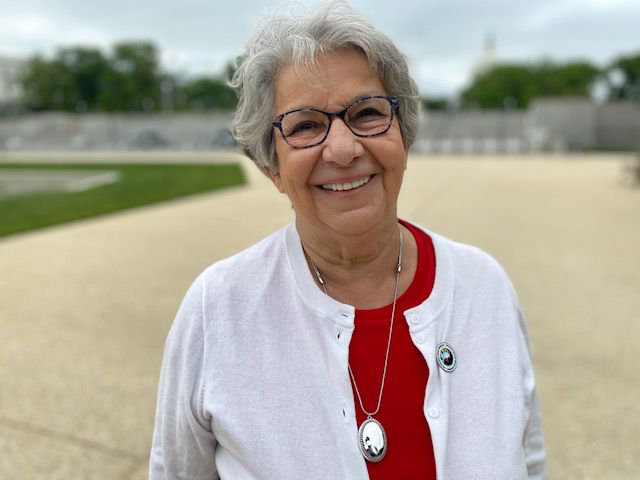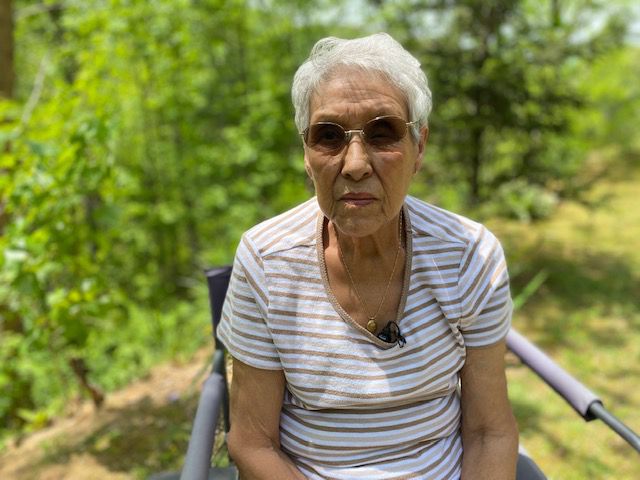From the early 1800s until the 1960s, Native American boarding schools were established nationwide in an effort to assimilate Native Americans into American culture.
In May 2022, the U.S. Interior Department released a more than 100-page report about its investigation into the Federal Indian Boarding School Initiative – including information on burial sites, the identification of children and investigating abuses.
Between 1819 and 1969, the U.S. operated or supported 408 boarding schools across 37 states, including seven in Hawaii and 21 in Alaska, according to the Department of the Interior. The Interior Department's report described rampant physical, sexual and emotional abuse at many of these schools.
One such student was Ramona Charette-Klein, who nearly 70 years later still recalls a constant feeling of loneliness.
“I remember looking out that frosted cold window, yearning to see my parents, thinking maybe tomorrow, maybe tomorrow I will see momma and daddy,” Charette-Klein said.
“It didn’t come," she added. "It didn’t come.”

Charette-Klein's parents were miles away when she and many of her siblings attended Fort Totten Indian Boarding School in North Dakota.
“I was among strangers. I was scared,” Charette-Klein said. “I remember hearing other kids cry at night.”
Charette-Klein grew up in North Dakota as a member of the Turtle Mountain band of the Chippewa Tribe. She described her family as poor, recalling that 10 people shared two rooms.
When she was seven, she was sent from her home to the Fort Totten Indian Boarding School, about 150 miles away; She doesn’t know if her mom was forced to send her there or felt she just didn’t have any other choice.
“If your children are hungry … I don’t know if you can even call that having a choice,” Charette-Klein said.
Indian Boarding Schools were often touted as a vehicle for indigenous children to achieve a better life, but the reality was often much different, students said. Charette-Klein learned that when she arrived in 1954 and was forced to undress and get a haircut.
“I believe they made the assumption that I had head lice, and fine-combed my head with the kerosene,” Charette-Klein said.
She says at Fort Totten she was constantly hungry. She also described being beaten.
“There’s a difference between being alone and being lonely. That was lonely,” Charette-Klein said.
The federal government ran Indian boarding schools for 150 years until 1969. One of the goals, as described by one of the founders, was to “kill the Indian and save the man.”
It was cultural assimilation.
Some children had to change their name and do manual labor. Some were abused.

Myrtle Driver Johnson lives in Cherokee, N.C., where the Eastern Band of Cherokee Indians is located. Cherokee is located within the Qualla Boundary, roughly 57,000 acres of land in western North Carolina owned by the tribe and kept in trust by the United States government.
She attended Haskell Indian Institute in Kansas for five years in the 1950s and 60s after growing up an orphan in Cherokee.
Unlike Charette-Klein, Johnson described a positive experience at the school. However, she said the school discouraged her from speaking Cherokee, her native language. In her own way, she resisted.
“When their back was turned, I spoke Cherokee again,” she said. “I’m going to talk my language. That’s mine."
Many children ended up losing their native language in places around the country.
In Cherokee, the community is trying to bring the native language back at the New Kituwah Academy, which teaches both English and Cherokee.
“If you don’t have the people here to share with you where this comes from, why this is important, it gives you no sense of being of where you are, who you are,” said New Kituwah Academy Curriculum and Instruction Supervisor Bo Lassiah.
Charette-Klein knew who she was before she even reached the age of 10, telling Spectrum News that she refused to cry when she was beat.
“That determined child was how I got to where I am today," she said. "Because I won’t let them take my dignity. I just won’t."
Charette-Klein has continued speaking out about the impact of boarding schools, including testifying before Congress earlier this year.
“I think about the destruction," she said. "The destruction that boarding schools have had and how much talent the United States has lost."



